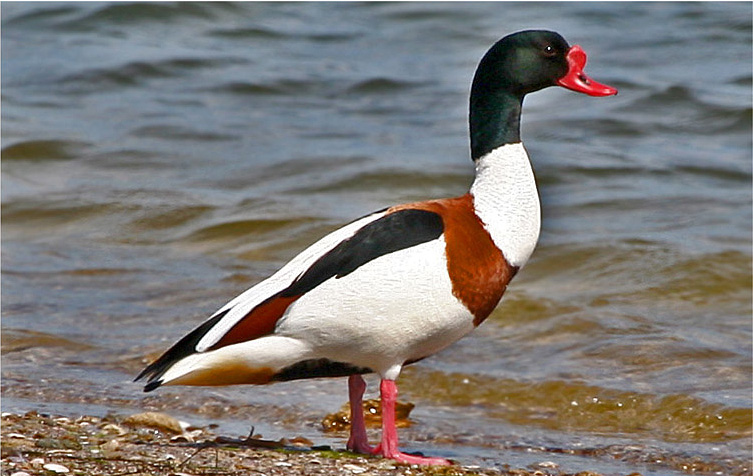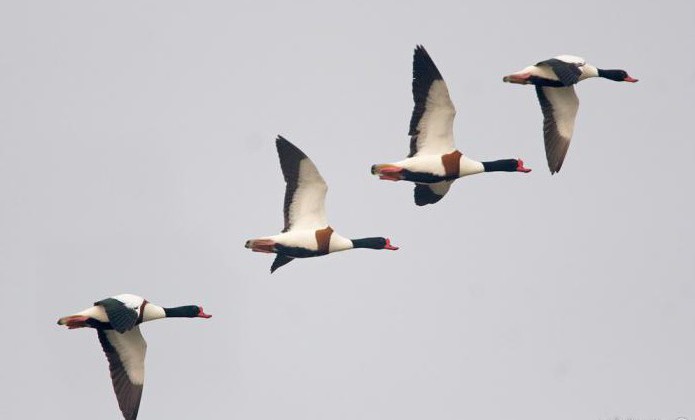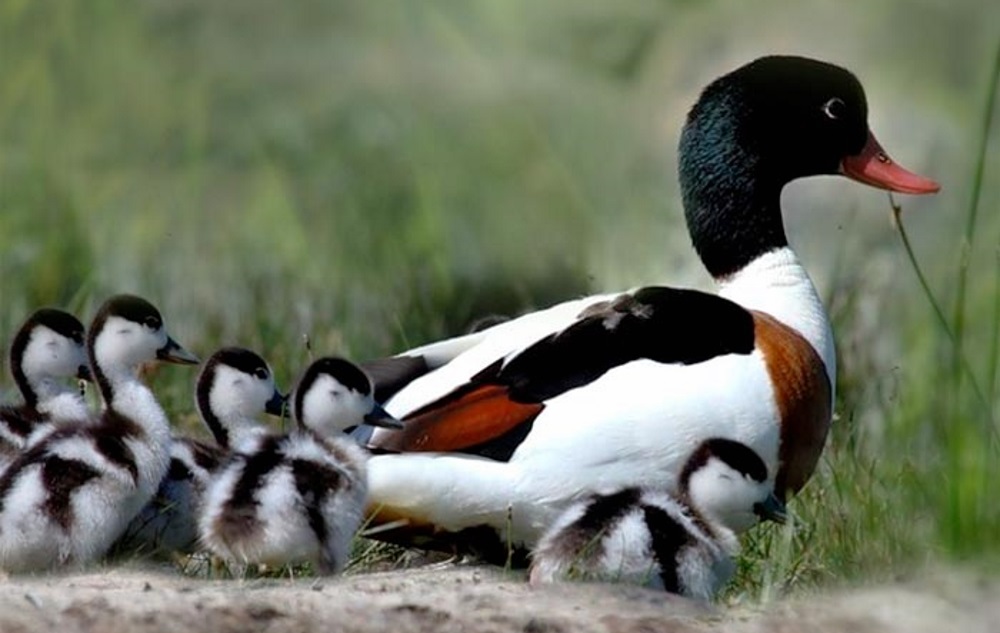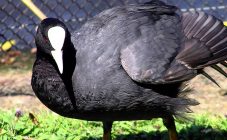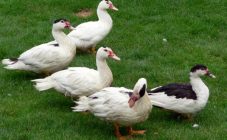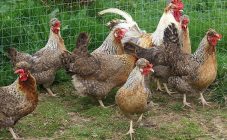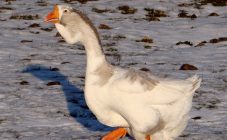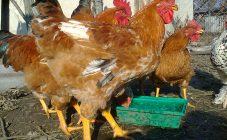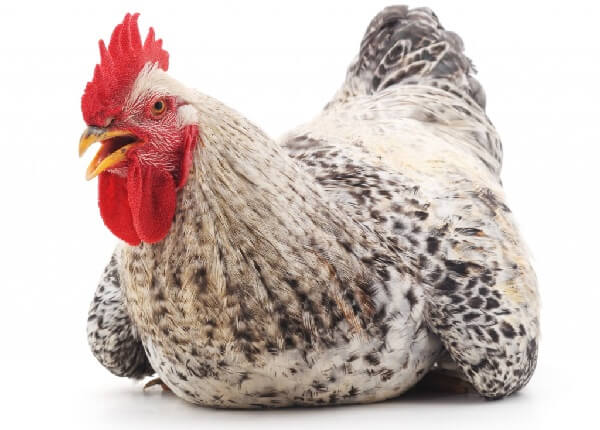Content:
Among the wild representatives of the duck family, undoubtedly the most striking is the Peganka duck, belonging to the genus of red ducks. This bird attracts attention with its contrasting bright plumage, in which, against the background of boiling white color, zones of black, green and red are separated, located on the head, back and wings.
Although these birds are wild, they have been increasingly bred by farmers on their own farms lately. You can read about the main characteristics and description of the breed, breeding characteristics and much more below.
General information about the breed
These wild ducks are currently listed in the Red Book, as their numbers are dramatically decreasing. But at present, a large number of these birds are in the zoos of the world, and they are also kept in city parks, where they feel at ease in artificial reservoirs, attracting a large number of visitors with their beautiful appearance and demeanor.
In appearance and manners, they cannot be 100% attributed to the duck family, and biologists consider them an intermediate species between geese and ducks proper. Atayki ducks, in addition to purely duck characteristics, have qualities characteristic of geese and swans. Like geese, Peganki behave actively on the ground and in the sky, they keep smartly on land, and move slowly in the air, slowly flapping their strong wings. And they are united with swans by monogamy - drakes and ducks pair up for life.
There are several varieties of Altay ducks:
- Peganki Rajas;
- ordinary Peganki;
- extinct crested Peganki.
On the territory of our country, only ordinary Peganki are found.
Characteristics and description of the breed
These ducks differ from other breeds by their unusual bright color of plumage: the basic tone of the body is pure white, which contrasts with the bluish-black color of the head, which shines in green. The same coloration is at the neck, wing tips, middle abdomen and back. On the chest, shoulder blades and part of the back there is a "sling" of chestnut color with a reddish tint. The undertail is red, the limbs are pinkish, and the beak is bright red.
Drake can be easily distinguished by bright green "mirrors" on powerful wings, as well as by a red growth located on the beak. The ducks have bands of white feathers around their eyes. The plumage of males is brighter, while that of females is dull.
The duckling is distinguished by its snub-nosed beak and the absence of green mirrors on its wings.
The proportionally developed body is crowned with a long, elongated neck with a medium-sized head. Legs - long, strong, with webbed feet. The tail unit is of medium size. The wings are long and powerful, in a calm state they are tightly pressed to the body, their tips reach the beginning of the tail, and their length in span can be up to 1.3 m.Body length: in drakes - about 66 cm, in females - up to 59 cm The weight of the Peganok ducks is not too large: the drakes weigh 0.9-1.5 kg, and the smaller ducks weigh up to 1.3 kg.
These ducks are notable for their "talkativeness", females emit nasal sounds, consisting of the syllable "ga", and in case of danger the abrupt signal "gaak-gaak" is clearly heard.
Ducks are wonderful hens, they have a well-developed maternal instinct, during laying there can be from 7 to 15 eggs in the nest, but their specific number depends on the characteristics of the female organism. It happens that a couple does not have time to build a nest before laying, and in this case Peganka, like a cuckoo, lays eggs in the nests of other "married" couples.
The meat of these birds is not too soft, with a specific "duck" flavor. In summer, you should not slaughter ducks - during this period the meat becomes too tough, but by winter the birds "gain" fat, and that's when they are slaughtered. But poultry farmers recommend keeping the carcasses in the cold for several days, so that they “infuse” and lose their unpleasant smell and taste.
Breeding features of the breed
In natural conditions, these birds fly beautifully, run quickly, if there is a reservoir nearby, they can spend most of them on the water. They usually settle in burrows, for which they received the name "earthen ducks".
Peganka ducks can lead a sedentary life, be migratory or partially migratory birds - it all depends on the living conditions in the regions of their habitat. These birds, "living" in England, the Mediterranean Sea and Iran, lead a sedentary lifestyle. The rest of the Peganka have to fly to warmer countries for the winter:
- to the north of Africa;
- to Iran;
- to Southeast Asia;
- to Portugal;
- To France.
Migratory ducks change their place of residence three times a year. For the first time, they fly to the place where they will change plumage. This process is quite long - up to 30 days, at this time the birds completely lose their feathers, therefore they cannot fly, but only move on land or swim. Usually, for the period of molting, they stray into flocks - this way it is easier for them to resist many natural enemies.
After molting, some of the birds return to their nests, but most fly away to warm regions. Birds make such a flight in the last decade of September - mid-October. Peganki fly back to breed in mid-March - late April.
Usually, these individuals form pairs during the winter, but the period of mating games, which falls on the first days after arriving at the nesting sites, is not canceled. Up to 10 drakes can look after one female. They circle around the supposed girlfriend, showing off their "wedding" outfit, making a special whistle. A duel between males can last long enough, during it males show themselves to each other in all their glory, but it almost never comes to a fight.
After nesting, the female lays creamy white eggs. Incubation lasts 4-4.5 weeks.
When chicks are born, couples unite in herds, jointly protecting their broods from birds of prey and animals.
It is easy to keep these ducks at home, as they are quickly tamed, they can live in the poultry house peacefully with its other inhabitants. For normal maintenance, a spacious, fenced-in walking area with pre-sown grass should be prepared. The following components should be present in the diet of these ducks:
- cereals;
- special compound feed;
- bread;
- finely chopped waste of vegetables and fruits;
- duckweed;
- greens.
Drinkers should always have clean water. For the winter, Peganoks should be transferred to a warm poultry house, where heating devices must be installed. For the breeding season, it is better to isolate this duck herd from other inhabitants of the house, because during this period the drakes are extremely aggressive.
Breed advantages and disadvantages
The advantages of Peganok ducks include:
- beautiful appearance;
- monogamy;
- simplicity of content;
- easy to tame, not shy.
The disadvantages include:
- low egg production;
- poor quality meat;
- low carcass weight.
If these birds are bred in private farmsteads, then for decorative purposes. But these ducks are distinguished by their peaceful disposition, beautiful appearance, therefore they quickly become favorites of the whole family. And if there is a pond next to the site, they can swim in it for hours, obtaining food for themselves.
